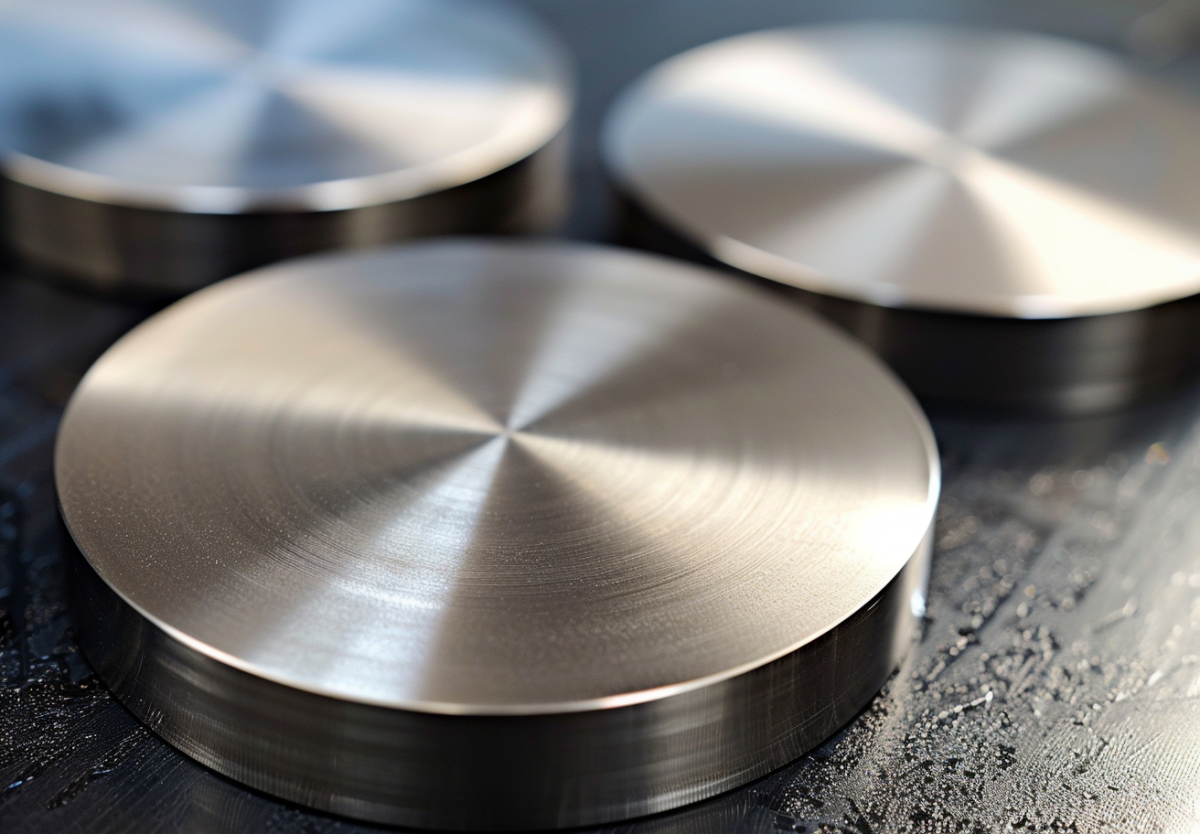Tungsten sputtering targets are well-known for their ability to handle extremely high temperatures. Tungsten has the highest melting point of any metal at 3422°C (6192°F). This makes it one of the best materials for industries where components must work in extreme heat, such as electronics, aerospace, and semiconductors.
Key Properties of Tungsten Sputtering Targets
Tungsten’s ability to handle high temperatures is one of its greatest strengths, but it has other important features too:
- High Melting Point: Tungsten’s melting point of over 3400°C allows it to stay stable in environments where other materials might fail. This makes it useful for processes involving high heat, like thermal evaporation.
- Strong and Dense: Tungsten is one of the densest materials. This strengthens it, allowing it to endure the energy impacts during sputtering processes.
- Low Thermal Expansion: Tungsten changes minimal in size when exposed to heat. This is important for thin-film applications where even slight changes can affect the uniformity of the coating.
- Good Thermal Conductivity: Tungsten conducts heat efficiently, which helps prevent overheating during sputtering. This is important in the semiconductor industry, where keeping a steady temperature is essential.
- Resistant to Oxidation: Though tungsten can oxidize at high temperatures in the presence of oxygen, it performs well in controlled environments like vacuum chambers or inert gas settings.
Applications of Tungsten Sputtering Targets
Because of these properties, tungsten sputtering targets are used in many industries. Some of their key uses include:
- Semiconductors: Tungsten’s stability under high temperatures makes it important to make integrated circuits and transistors that can handle heat.
- Aerospace Components: Parts used in aircraft and spacecraft face rapid temperature changes. Tungsten is used to coat parts that need to stay stable in these environments.
- Electronics: Tungsten is often used in electronic devices, such as heat sinks and electrical contacts, to keep them from overheating.
- Solar Panels: Tungsten is used in thin films for solar cells. Its ability to withstand high temperatures helps improve the efficiency of photovoltaic cells in solar power systems.
How Tungsten Compares to Other Sputtering Materials
The article “Top 10 Sputtering Target Materials that Can Withstand High Temperatures“ highlights tungsten as the top material for handling extreme heat. While other materials like tantalum, molybdenum, and silicon carbide also perform well at high temperatures, they do not reach tungsten’s level.
- Tantalum: Tantalum can handle temperatures up to 3017°C (5463°F). It is great for applications where both heat and chemical resistance are needed. But it can’t match tungsten’s extreme heat endurance.
- Molybdenum: Molybdenum has a melting point of 2623°C (4753°F) and is often used in aerospace and electronics. It performs well under heat, but it still cannot withstand the same level of temperature as tungsten.
- Silicon Carbide (SiC): SiC can handle up to 2700°C (4892°F) and is often used in semiconductors and sensors. However, it lacks the extreme temperature endurance of tungsten.
Tungsten remains the best choice for the most demanding environments where the highest temperature resistance is needed.
Tungsten in the Sputtering Process
In sputtering, high-energy particles hit a target made of the desired material, like tungsten. This causes atoms from the target to be ejected and deposited onto a surface. Tungsten’s strength and heat resistance make it ideal for sputtering systems that operate under extreme conditions.
In industries where precision and heat resistance are critical, tungsten sputtering targets are the best option. Their ability to remain stable during sputtering ensures consistent and high-quality coatings.
Conclusion
Tungsten sputtering targets are the best choice for high-temperature applications due to their unmatched heat resistance and other important properties. They are widely used in semiconductors, aerospace, and electronics. As explained in the article “Top 10 Sputtering Target Materials that Can Withstand High Temperatures,” tungsten is the top performer when it comes to handling extreme heat, outshining other materials like tantalum and silicon carbide. Companies looking for high-quality sputtering materials can rely on Stanford Advanced Materials (SAM) to provide the best tungsten sputtering targets, ensuring optimal performance for all high-temperature needs.

